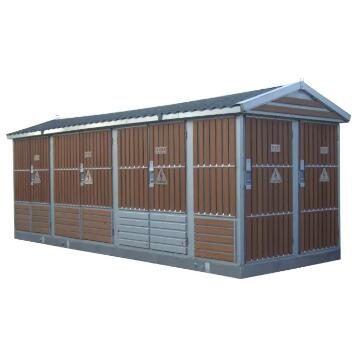Safeguarding Progress: Exploring the Primary Safety Features of Cabinet Type Substations
2024-01-09
Introduction:
In the dynamic world of electrical distribution, safety is paramount. Cabinet Type Substations, with their compact design and pivotal role in power distribution, are engineered with an array of safety features to protect both personnel and equipment. This blog post delves into the primary safety features integrated into Cabinet Type Substations, ensuring secure and reliable operation in various environments.
1. Enclosures and Insulation:
- Purpose:
Enclosures are a fundamental safety feature of Cabinet Type Substations. These enclosures shield personnel from live components and protect the internal equipment from external environmental factors.
- Advantages:
- Arc Flash Prevention: Enclosures mitigate the risk of arc flashes, safeguarding personnel against the release of energy that can cause severe injuries.
- Environmental Resilience: Insulation within the enclosures protects the internal components from dust, moisture, and other environmental elements, ensuring reliable performance over time.
2. Earthing Systems:
- Purpose:
Earthing systems are crucial for directing fault currents safely into the ground, minimizing the risk of electric shock and reducing potential damage to the substation.
- Advantages:
- Personnel Safety: Effective earthing safeguards personnel by providing a low-resistance path for fault currents, preventing the buildup of hazardous voltages.
- Equipment Protection: By dissipating fault currents safely, earthing systems protect the internal components of the substation from damage during fault conditions.
3. Switchgear and Protection Devices:
- Purpose:
Switchgear and protection devices serve to control the flow of electrical power, isolate faulty equipment, and protect the system from overloads or short circuits.
- Advantages:
- Operational Safety: Switchgear allows for the safe control of electrical currents, reducing the risk of accidents during routine operations.
- Fault Isolation: Protection devices swiftly detect faults and isolate affected areas, preventing the spread of issues and minimizing downtime.
4. Ventilation and Cooling Systems:
- Purpose:
Ventilation and cooling systems regulate the temperature within the substation, preventing overheating and ensuring optimal operating conditions.
- Advantages:
- Equipment Longevity: Proper temperature control contributes to the longevity of transformers and other components, reducing the risk of premature wear.
- Operational Efficiency: Cooling systems maintain consistent temperatures, preventing performance degradation that may occur due to overheating.
5. Monitoring and Communication Systems:
- Purpose:
Monitoring and communication systems provide real-time data collection and enable remote management, contributing to proactive maintenance and operational safety.
- Advantages:
- Early Fault Detection: Continuous monitoring allows for the early detection of abnormalities or faults, facilitating prompt corrective actions.
- Remote Control: Remote management capabilities reduce the need for on-site interventions, enhancing overall safety for personnel.
6. Safety Signage and Labels:
- Purpose:
Clear signage and labels within the substation provide critical information about safety procedures, potential hazards, and emergency response protocols.
- Advantages:
- Personnel Awareness: Properly labeled equipment and safety signage ensure that personnel are aware of potential risks and follow established safety protocols.
- Emergency Preparedness: Clear communication through signage aids in quick and effective response during emergency situations.
Conclusion:
Cabinet Type Substations are fortified with a comprehensive array of safety features, underscoring the commitment to the well-being of both personnel and equipment. As these substations continue to play a pivotal role in modern power distribution, the integration of advanced safety measures ensures that progress is safeguarded by a robust foundation of security and reliability.



